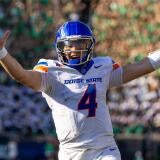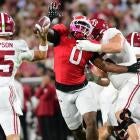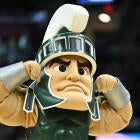Documents in lawsuit vs. NCAA reveal high number of concussions
The NCAA's own tracking data states there were 29,225 concussions suffered by athletes in all NCAA sports from 2004-2009.
Of the many accusations springing from what is emerging as a historic legal case against the NCAA, the biggest claims negligence in how the governing body of college athletics monitored and handled concussions for its athletes.
The issues are complicated, but what I mainly wanted to do was examine a number: 29,225.
That, according to the NCAA's own injury-tracking data, was the total number of concussions from all NCAA sports from 2004-2009.
"In addition," the court documents examined by CBSSports.com say, "the statistics show approximately 16,277 of these occurred in football, which is more than all other Fall sports combined."
Read the documents in their entirety here and here.
The documents also state: "The NCAA released its injury surveillance data for the 2005-2006 football season, and it continued to show high rates of concussions and head injuries. Specifically, head injuries accounted for 11 percent of practice and 5 percent of game injuries. Concussions ranked third highest in both practice and competition. ... In addition, a team averaging 60 game participants could expect one concussion every five games. Seven percent of all practice and game injuries involved concussions."
These numbers are disturbing to say the least. What this means is that many college players likely enter the NFL with an already large number of concussions.
Eastern Illinois defensive back Adrian Arrington, who claimed the NCAA didn't do enough to protect athletes from concussions, originally filed the lawsuit against the NCAA in 2011. Lawyers representing Arrington have asked a federal judge to allow his suit to become a class-action case.
We knew players got concussions in college. However, what the NCAA's own accounting, crystallized in these documents, shows is that the number of concussions suffered by college football players is greater than commonly known.
That's the biggest takeaway from these documents. While the NCAA is accused of numerous things by the plaintiffs (the NCAA's own internal emails are the most damaging part of the documents) the sheer numbers are what stand out the most.
A legion of NFL players -- now and in decades past -- may have entered the NFL with head trauma. More than we could have imagined.
What scientists now say is that CTE -- chronic traumatic encephalopathy -- is a degenerative brain disease caused by repeat head injury like concussions. The NCAA's own numbers show college players suffer from numerous head injuries even before getting to the pros.
NCAA players also suffer from the same pressures to play as the pros. The lawsuit states in one part: "... on August 27, 1996, Dr. Kenneth Viste, Jr., President of the American Academy of Neurology, Dr. George Zitany, president and CEO of the Brain Injury Association, and Dr. Jay Charles Rich, President, American Association of Neurological Surgeons, wrote a letter to Cedric Dempsey, the Executive Director of the NCAA articulating many of the concerns that still exist surrounding the issue of head injuries in athletics and putting the NCAA on notice regarding the NCAA's deficiencies. Because of the pressure to win, the letter warned, 'coaches, owners, fans, and family expect and sometimes demand that an injured player 'tough it out' and play through the pain ...'"
In the court documents, Arrington describes his college playing life, and what he says was the devastating aftermath of having so many concussions.
Arrington, in the documents, states he "didn't know that I would have a seizure every day, I would have seizures so much. I didn't know that I couldn't be alone with my kids [because of the seizures]. ... I didn't know I couldn't drive a car to take my daughter to the store and go provide for my kids. ... I didn't know I couldn't use that degree I went to go to school for.
"What was my point of going to college?"
The documents quote Arrington as saying he continues to experience seizures, but testified he "never knew about seizures happening after concussions until I experienced those."
He added: "I didn't know that I would have a seizure every day, I would have seizures so much." Initially, he explained "I didn't think there was anything serious about the situation because I didn't think -- because I have never heard anything because of seizures or long term issues because of concussions or anything like that."
Arrington added that he "also reports memory loss." Arrington noted that by 2010, "I found out that I was having a memory problem. I found out that these medicines weren't working. I found out that people were killing theyself [sic] about these seizures and concussion. I found out that there's really no answers to what's going on with my head."
Arrington didn't play in the NFL but there are many thousands who in recent years went from college to the pros and in doing so may have taken a lengthy concussion history with them.
















